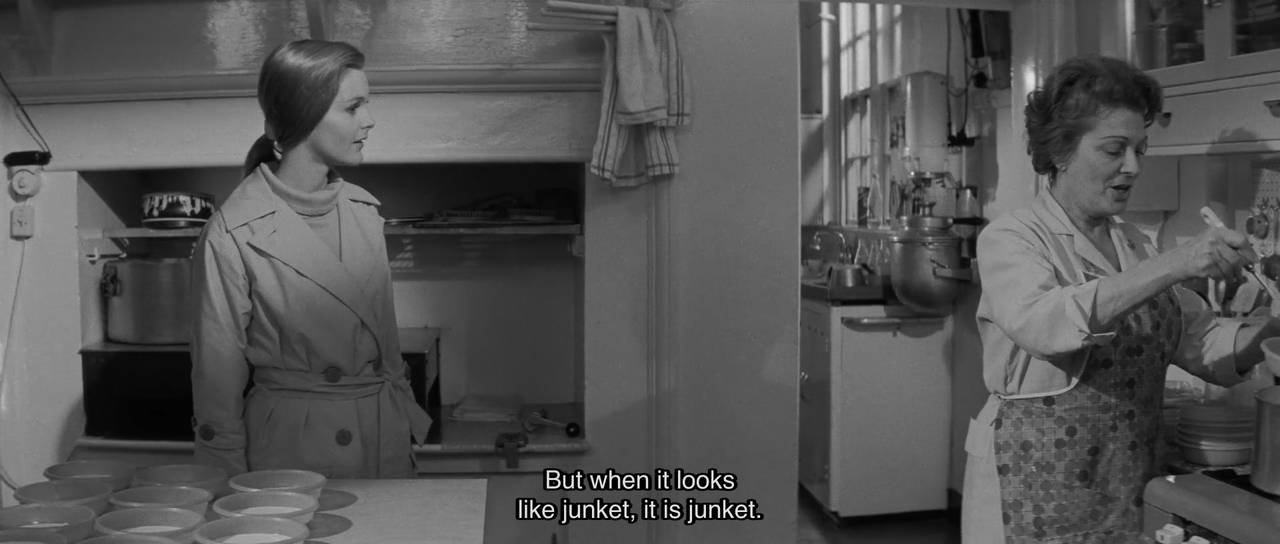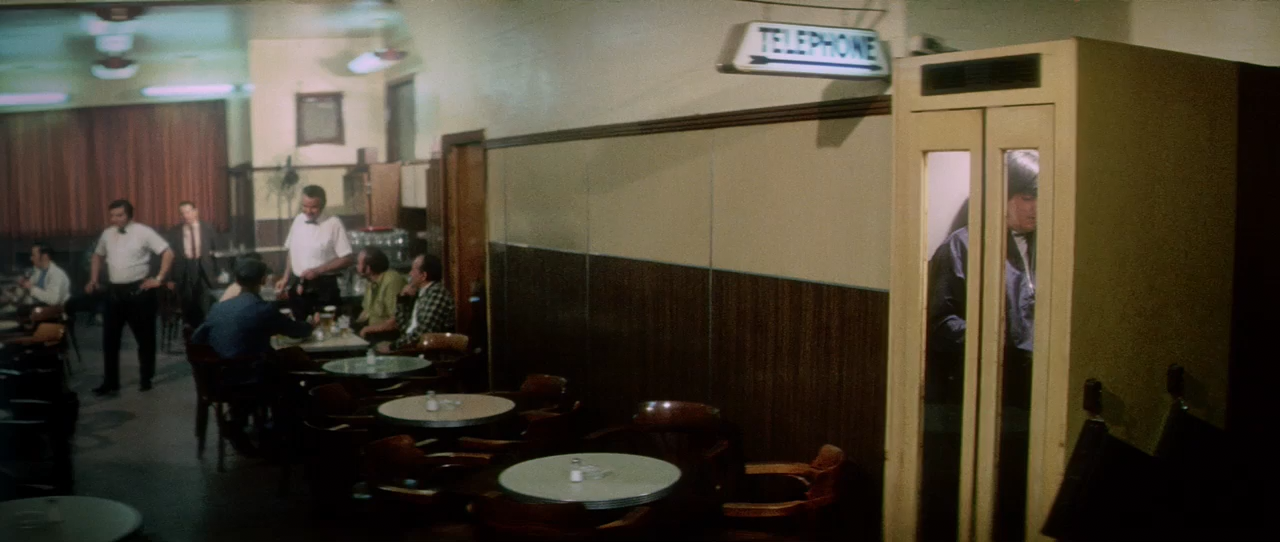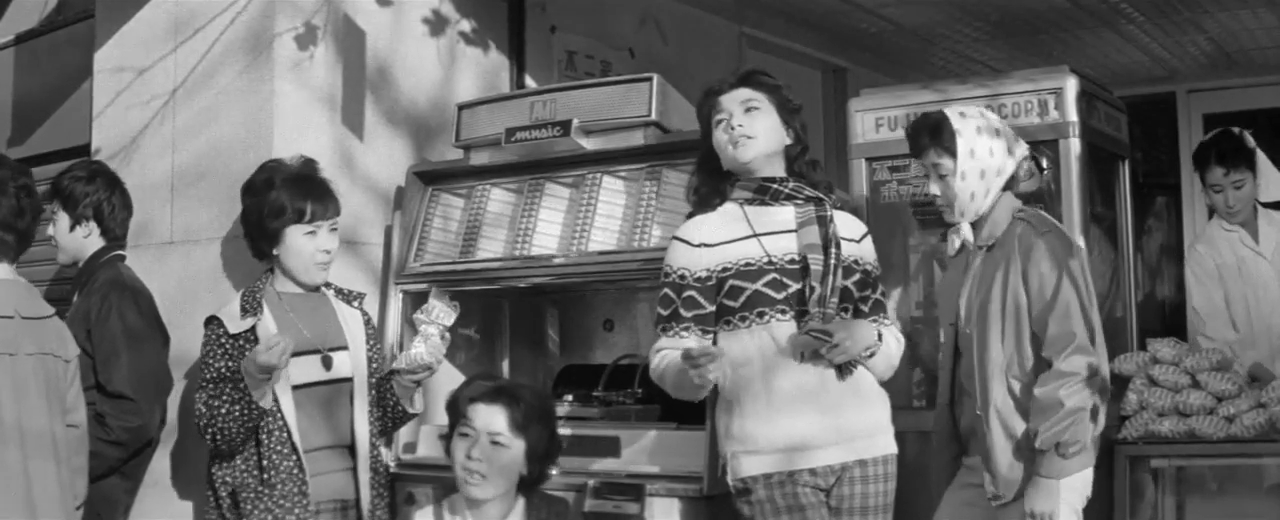Kisapmata [Sa bawat kisapmata / In the Wink of an Eye] (Mike De Leon, 1981)
Aug
18
gatas

Adelina (Charito Solis) unwell in bed. She holds a glass of milk. DP: Rody Lacap.
“Matto, caldo, soldi, morto… girotondo…”Vergogna, schifosi!… [Dirty Angels] (Mauro Severino, 1969)
Aug
14
fruit

A group of people in skimpy swimwear sits on space-agey white plastic seating – Archizoom's radical Superonda (1967) – while decadently eating luxurious tropical fruit from a round table that futuristically descends from the ceiling via a steel pole. DP: Angelo Lotti.
”'Junket is junket,' I said, and 'no matter what you do with it, it still tastes like swill and swallows like slime.'”Bunny Lake Is Missing (Otto Preminger, 1965)
Aug
4
junket

Two women – one young (Carol Lynley), one older (Lucie Mannheim) – in a school's kitchen. The older woman handling the food says “But when it looks like junket, it is junket.“. DP: Denys N. Coop.
– school cook
La maudite galette [Dirty Money] (Denys Arcand, 1972)
Aug
2

At a depressing, fluorescent-lit bar, men gathered at small round tables smoke and drink. A single man in a brightly lit phone booth places a call. DP: Alain Dostie.
Wieczne pretensje [Permanent Objections] (Grzegorz Królikiewicz, 1975)
Jul
29
kotlet mielony

Two men in suits in what appears to be a factory canteen. One offers the other a large piece of kotlet mielony or kotlet schabowy, a type of #schnitzel. DP: Bogdan Dziworski.
“You know this city's full of hawks? That's a fact. They hang around on the top of the big hotels. And they spot a pigeon in the park. Right down on him.”On the Waterfront (Elia Kazan, 1954)
Jul
28
liquor

Edie Doyle (Eva Marie Saint) apprehensively sips liquor with Terry Malloy (Marlon Brando) in attendance. DPs: Boris Kaufman & James Wong Howe.
– Terry Malloy
玉羅剎 [Yu luo cha / The Jade Raksha] (Meng-Hua Ho, 1968)
Jul
20
peanuts

Leng Chiu-han's hand (Pei-Pei Cheng) holds up a roasted peanut in the shell. On the table several more peanuts, empty shells, wine cups, and chopsticks. DP: Kuo-Hsiang Lin.
Na wylot [Through and Through] (Grzegorz Królikiewicz, 1972)
Jul
15
sandwiches

Jan (Franciszek Trzeciak) and Maria (Anna Nieborowska) share lunch on a bench. DP: Bogdan Dziworski.
狼やくざ 殺しは俺がやる [Ōkami yakuza: Koroshi wa ore ga yaru / Yakuza Wolf: I Perform Murder / The Lone Assassin] (Ryūichi Takamori, 1972)
Jul
13
lollipops

One of the gang members, immaculately dressed in all-black and small like a child, walks along a seedy street holding an oversized rainbow lollipop. DP: Yoshio Nakajima.
